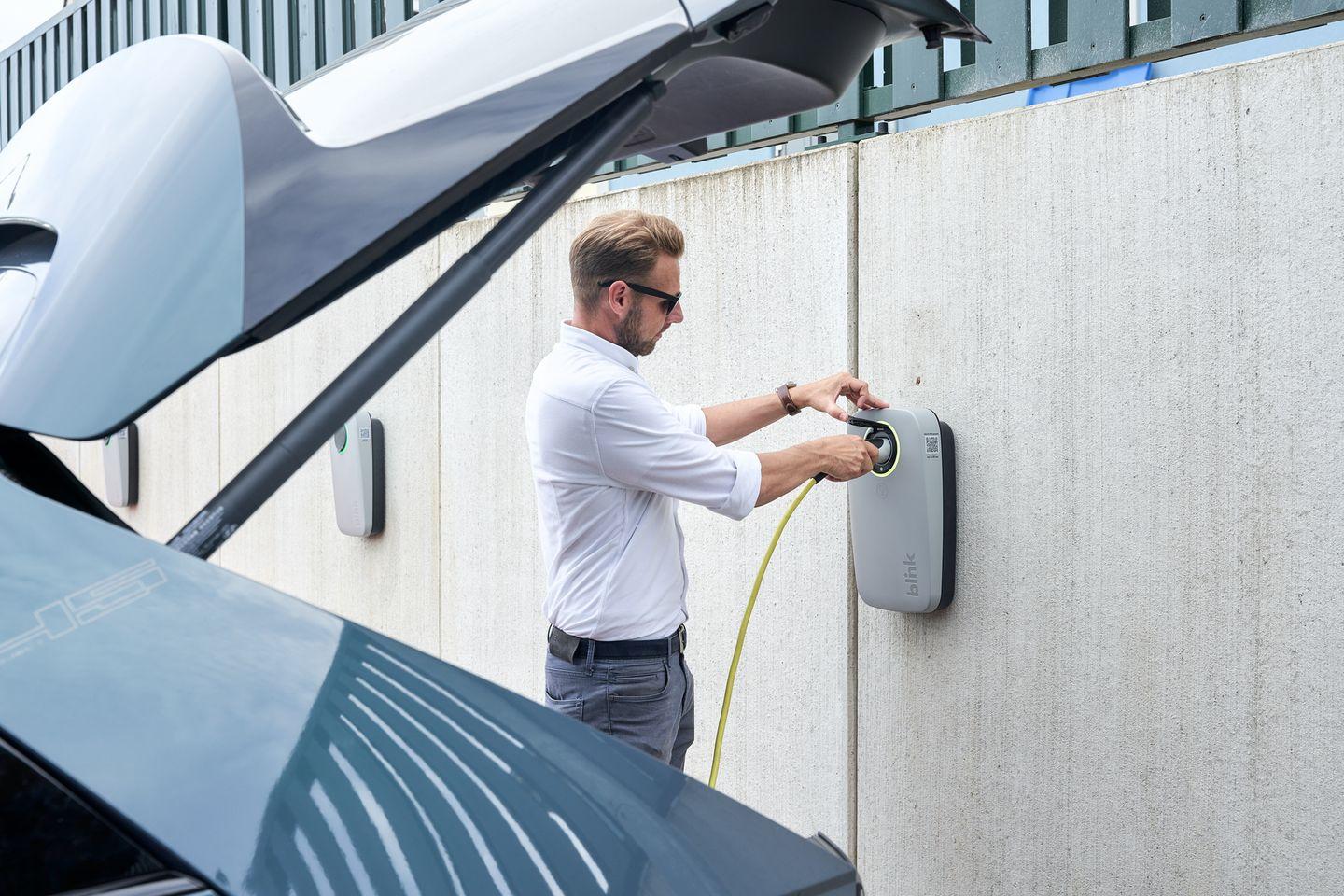Level 2 charging is the most common type of EV charging. Most EV chargers are compatible with all electric vehicles sold in the United States. DC Fast Chargers offer a faster charge than Level 2 charging, but may not be compatible with all electric vehicles. For more information, visit our EV Charging Equipment page.
Host FAQ
Sales & Products
Yes, Blink equipment is built with a rugged design rated for outdoor use.
Yes! We offer an array of marketing and promotional materials to help you get the word out about your EV charging stations. Please refer to the Host Resources.
Typically, there are incentives available. To learn about federal, state, and local incentives that are currently available, please visit the Commercial Incentives page of our website.
Different countries and localities have different standards and requirements for electrical equipment. Shop EV Chargers to learn more about Blink's products by region.
We can deploy more stations with available power or by utilizing local load management. Call your Sales Executive or contact us at (888) 998.2546 to get started.
Management
A full site assessment should be conducted in order to determine the best location for EV charger installation. Please refer to the Site Assessment in the Construction Resources for EVSE Installation page.
Yes. Blink chargers are ADA compliant. For more information please refer to the Construction Resources for EVSE Installation page.
Local load management allows for multiple chargers to share and distribute power for a single electrical panel or circuit.
Blink charging stations can be set for a predetermined per kilowatt, or time-based, price. The chargers can also be set to free. When working with a Sales Executive, they help you understand what is best for your facility.
No, assuming there is cellular signal at the installation site. If cellular signal is weak you may need WiFi or a cellular repeater.
The unit light will display blue if it is plugged into an electric vehicle and charging. If it is plugged into a vehicle and displays green, it means that the charge has been completed, and the station is available to be used by another EV driver.
When the power turns back on, the unit will go through its reboot and test cycles. Upon successful completion, it will automatically return to its waiting to charge state. If a vehicle was charging at the time the power went out, the driver would need to restart their charge.
Typically, if the station won’t turn on or the screen does not display, the breaker feeding the unit has been tripped or is turned off. Please check the breaker. If the breaker is on and the unit still does not work, please contact Blink Network Operations Center (NOC) at (888) 998.2546 x2.
Commissioning refers to the process of activating your already installed EV chargers on the Blink Network.
If your unit displays a “not commissioned” message, please contact Customer Support at (888) 998.2546
Blink has introduced a flat access fee of $0.49 for drivers per charging session at paid chargers. This fee will not affect your existing revenue agreements with Blink. This fee helps maintain and improve our charging network and has been set below the industry average to keep charging affordable. This fee only applies to charging stations using a pricing plan and does not impact free charging stations.
Network
Please email our Host Support team at hostsupport@blinkcharging.com or call 888.998.2546 x2 and we will resend your login credentials.
You can contact Host Support by calling (888) 998-2546 x2 or emailing hostsupport@blinkcharging.com.
Following the transition to the Blink Network, site hosts will be able to manage their chargers on the new Blink Network. If you missed our training webinars or would like a refresher, please reach out to your Blink Account Manager or click here to view our Blink Network Training for Series Stations video modules.
Blink Card
EV drivers can easily request a Blink card through the Blink Charging app. Simply log into the app, tap on “Account,” select “Request Blink Card,” and complete the form. Fleets and businesses can also request a pack of Blink cards by contacting Host Support.
To add a Blink RFID card to a member account, simply log into the Blink Charging app, tap “Account,” select “Add New Blink Card,” and enter the card name and number.
Businesses or fleets wishing to distribute a Blink card for use at free Series Q chargers on-site do not need to register an unassigned card with a member account to set up a member group. Note that cards must be assigned to a member account before using charging stations with the pricing plan.
Log into the Blink portal, click on “EVSE,” select “Location,” and choose “Member.” Next, click “Add User” to add users by email.
Please note that at IQ, MQ, some 30 kW DCFC, and 60-360 kW DCFC stations, hosts may also assign Blink cards to a group. Hosts must assign specific locations or zones for each user group at these stations. These stations will be unavailable to drivers outside the designated group. Additionally, it is not possible to enable pricing policy when using the group feature at these chargers.
Blink also offers private access at Series X and some DC fast chargers. This feature allows hosts to provide different pricing policies for public and private users. Hosts can follow the steps above, or Blink members can request private access using an invitation code on the Blink Charging app.

"Installing Blink chargers is a significant step in InterEnergy’s efforts to eliminate thousands of tons of CO2 emissions per year."
R. Gonzalez,
Chairman, InterEnergy
